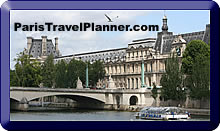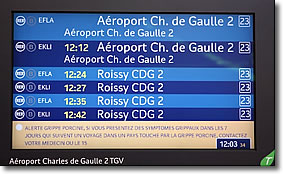 |
RER Suburban Trains, Paris, France | |
|
The RER suburban
train system is useful for getting
into and out of Paris, to its airports,
Versailles, and for excursions
from Paris.
|
||
|
|
||
|

|
|
Paris's RER (EHR-uh-EHR, Réseau Express Régionale) is the network of five suburban train lines that pass right through the city center, connecting outlying towns in the Île-de-France with the capital. RER Within ParisAlthough several RER lines have stations adjoining Métro stations, and you could use RER trains to go from one part of Paris's city center to another, it's usually faster and easier to use Paris's superb Métro system or city buses to move about in the city itself, and use the RER for trips to the suburbs, outskirts and airports. For example, Métro trains usually arrive and depart every few minutes, whereas during off-peak commuting times, RER trains may be 30 minutes apart. Smartphone AppsYou can use the superb Bonjour RATP and Île-de-France Mobilités smartphone apps to plan your trips and to buy your tickets. Fares for RER and Métro rides are the same; fares for buses, trams and funiculars are lower. Airports & Train StationsRER lines connect Paris with its two busiest airports (Roissy-Charles de Gaulle, and Orly) and important intercity train stations including Gare du Nord, Gare de Lyon, and Gare d'Austerlitz. For details on taking trains to and from the airports, see these pages: —Aéroport Charles de Gaulle Transportation The 5 RER Train LinesThe RER's five lines are lettered/numbered and color-coded: A - Red (A1, A2, A3, A4, A5) The letter designates the line, the number designates the branch of the line, as each line divides into branches at one or both ends. (Note: there are also many SNCF Transilien train lines with letters. More...) RER vs. MétroThe RER and Métro systems have the same fare and use the same tickets, but the two systems have these differences: 1. You should hold onto your ticket until the end of your journey on both the Métro and the RER (to prove that you paid to ride), but on the RER you must actually use your ticket to exit the station. If you don't have your ticket, you'll have to pay a fine...or stay in the station indefinitely.
2. Trains on the RER are larger, heavier, longer and less frequent than Métro trains. Many RER train cars have bicycle compartments where you can put your bike or large luggage. Look for the bike logo to discover where to put your bicycle. 3. Finding the train you want is different on the RER. See Riding the RER for details. More...
|
|
Above, signs in
stations guide you
|





